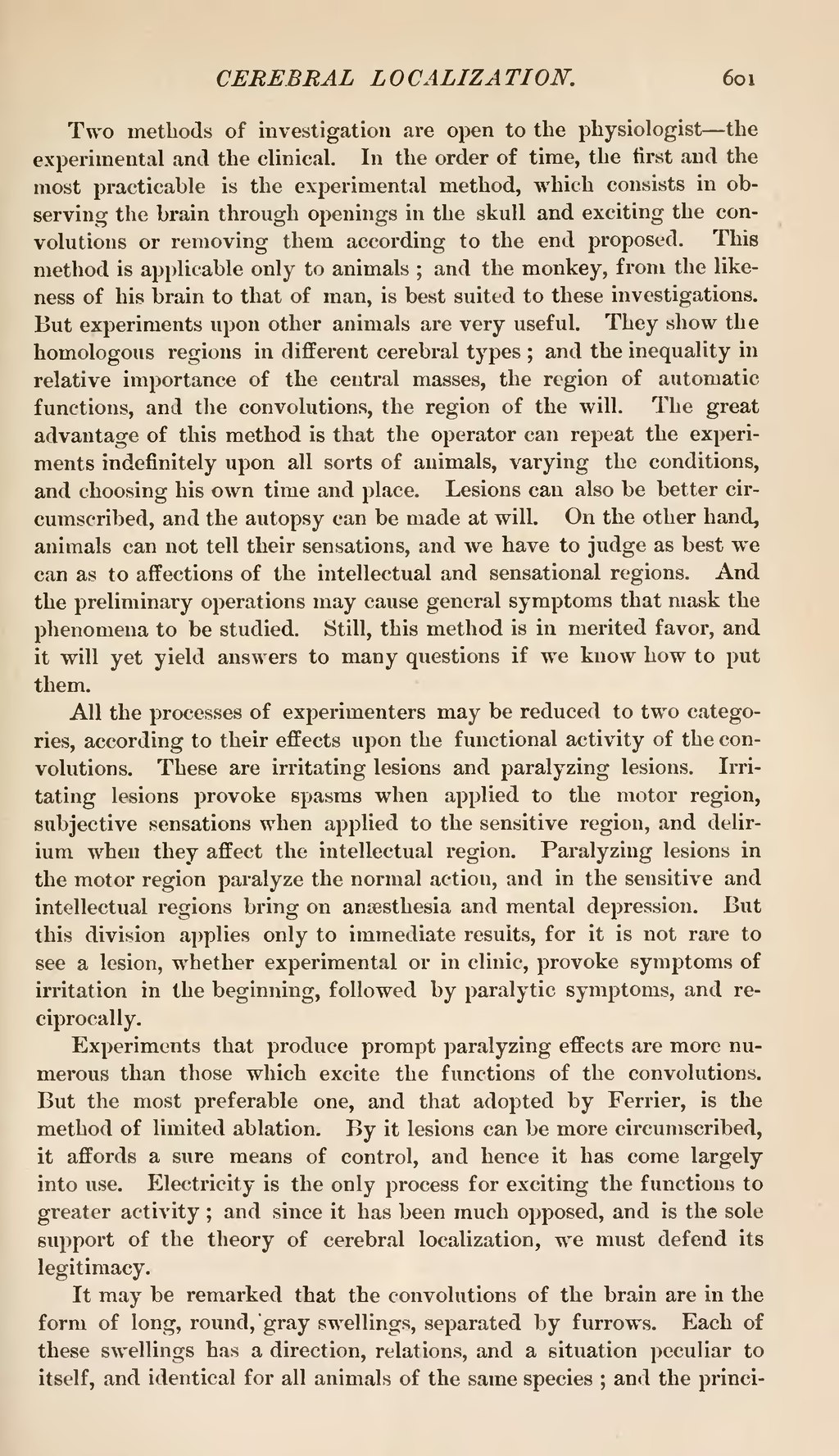Two methods of investigation are open to the physiologist—the experimental and the clinical. In the order of time, the first and the most practicable is the experimental method, which consists in observing the brain through openings in the skull and exciting the convolutions or removing them according to the end proposed. This method is applicable only to animals; and the monkey, from the likeness of his brain to that of man, is best suited to these investigations. But experiments upon other animals are very useful. They show the homologous regions in different cerebral types; and the inequality in relative importance of the central masses, the region of automatic functions, and the convolutions, the region of the will. The great advantage of this method is that the operator can repeat the experiments indefinitely upon all sorts of animals, varying the conditions, and choosing his own time and place. Lesions can also be better circumscribed, and the autopsy can be made at will. On the other hand, animals can not tell their sensations, and we have to judge as best we can as to affections of the intellectual and sensational regions. And the preliminary operations may cause general symptoms that mask the phenomena to be studied. Still, this method is in merited favor, and it will yet yield answers to many questions if we know how to put them.
All the processes of experimenters may be reduced to two categories, according to their effects upon the functional activity of the convolutions. These are irritating lesions and paralyzing lesions. Irritating lesions provoke spasms when applied to the motor region, subjective sensations when applied to the sensitive region, and delirium when they affect the intellectual region. Paralyzing lesions in the motor region paralyze the normal action, and in the sensitive and intellectual regions bring on anæsthesia and mental depression. But this division applies only to immediate results, for it is not rare to see a lesion, whether experimental or in clinic, provoke symptoms of irritation in the beginning, followed by paralytic symptoms, and reciprocally.
Experiments that produce prompt paralyzing effects are more numerous than those which excite the functions of the convolutions. But the most preferable one, and that adopted by Ferrier, is the method of limited ablation. By it lesions can be more circumscribed, it affords a sure means of control, and hence it has come largely into use. Electricity is the only process for exciting the functions to greater activity; and since it has been much opposed, and is the sole support of the theory of cerebral localization, we must defend its legitimacy.
It may be remarked that the convolutions of the brain are in the form of long, round, gray swellings, separated by furrows. Each of these swellings has a direction, relations, and a situation peculiar to itself, and identical for all animals of the same species; and the princi-
